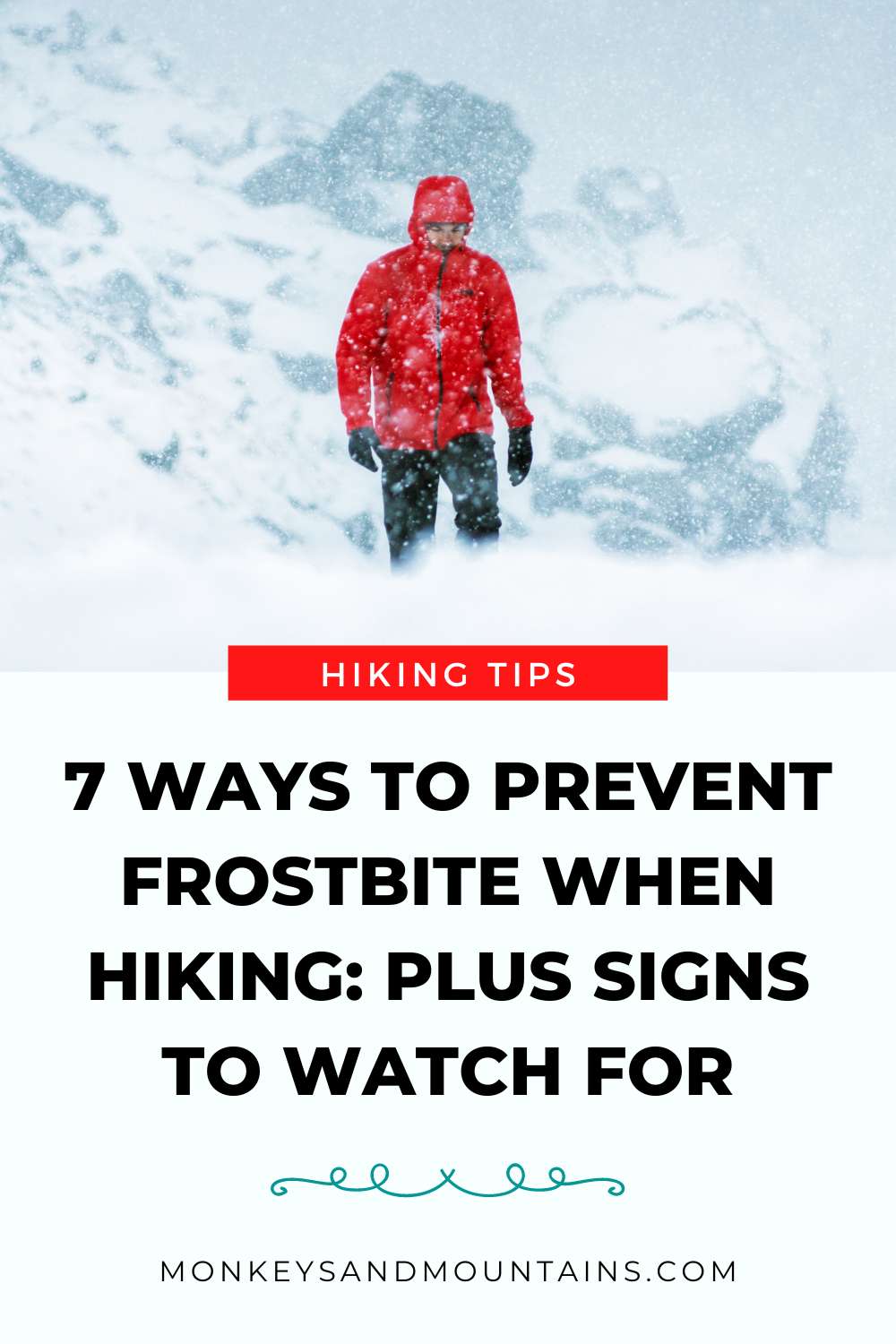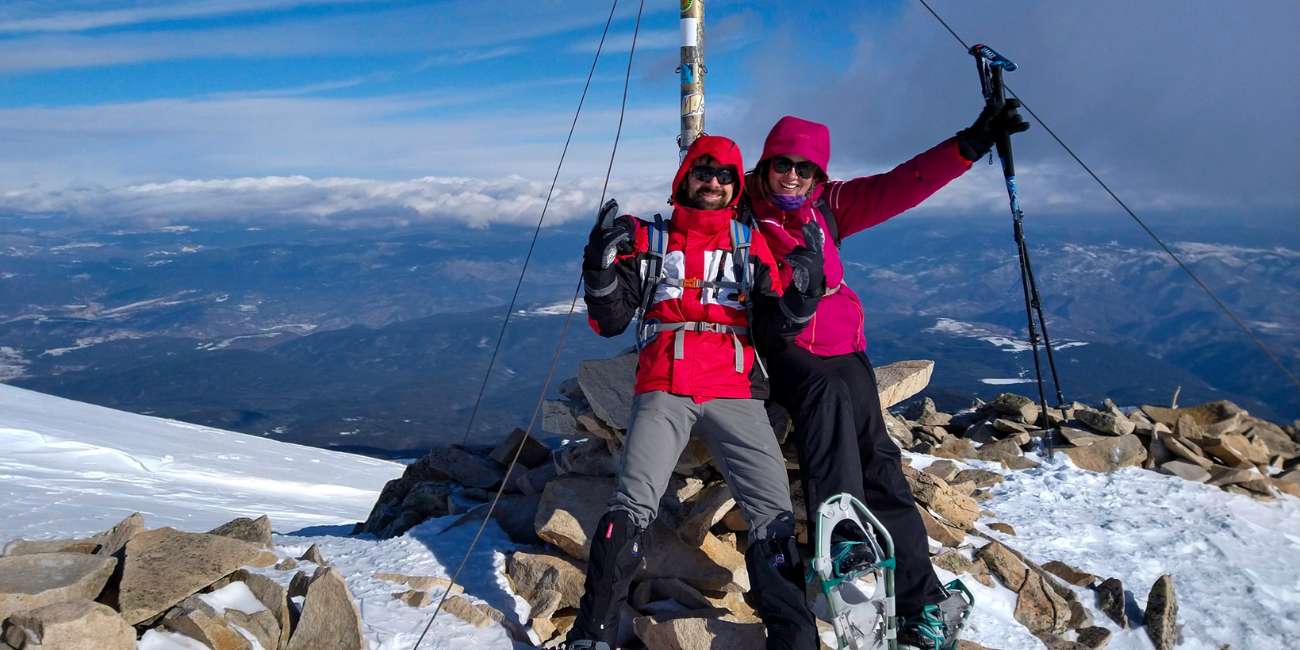Knowing how to prevent frostbite is essential for staying safe on your hike.
Table of Contents
Frostbite can have severe effects such as tissue damage and hypothermia, so it’s important to be prepared and know what steps to take.
I’ve had frostnip, the earliest stage of frostbite and superficial frostbite several times while winter hiking or snowshoeing in the Canadian Rockies in extreme temperatures -30C. Brrrr.
It’s not pleasant, especially when your fingers or frostbitten feet begin to warm up as the blood flow returns to the affected area. Then the pain really begins. In the early stages, the treatment is just to warm up. I’ve never needed medical treatment.
Fortunately, there are easy things you can do to protect yourself from the chilly weather while enjoying the great outdoors. And since I started following my own advice, I haven’t had frostbite ever since.
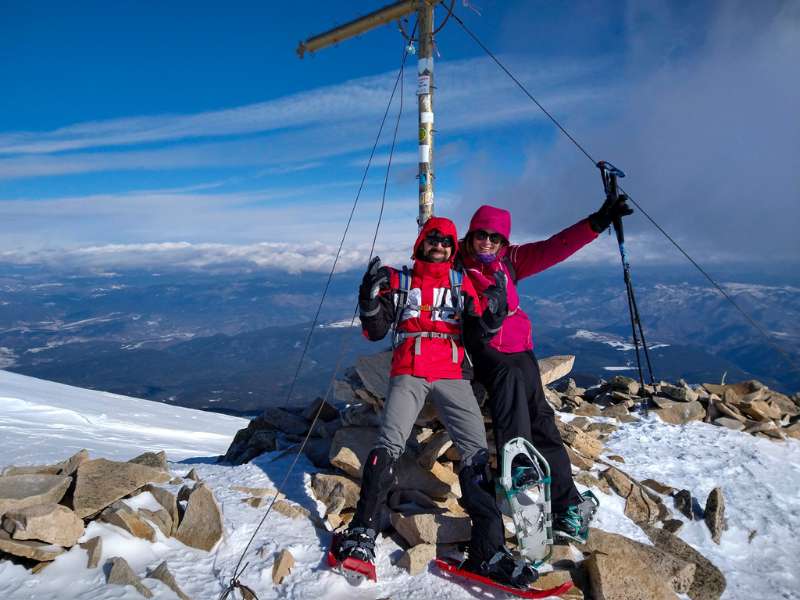
In this post, we’ll give you five tips for preventing frostbite during hikes.
1. Dress in Layers To Prevent Frostbite
When hiking in winter, it is important to wear the right type of clothing to keep in your body heat. Layering with different materials, such as wool and synthetic fibre fabrics, can help trap body heat to keep you warm. Also, be sure that your outer layer is wind and waterproof.
Check out our winter gear tips for more information. And for additional safety, bring extra dry clothing and leave it in the car where it will stay dry.
2. Protect Your Extremities Which Are Most Susceptible to Frostbite
According to the Mayo Clinic, the body parts that are most likely to get frostbite are the fingers, toes, nose, ears, cheeks and chin. You can prevent this by wearing a warm hat that covers your ears, a face mask, winter gloves and winter socks.
Remember, cotton is not your friend while hiking in winter since it gets wet easily, so look for wool.
Exposed skin to cold and/or windy weather is most susceptible to frostbite. However, you can also get it on covered skin.
I also recommend bringing an additional pair of gloves and socks in case yours get wet. Going so will reduce your risk of frostbite. You’ll find more suggestions in our winter hiking gear post.
3. Always Hike with an Emergency Thermal Blanket
I always hike with my emergency thermal blanket, even in summer. They don’t cost much, don’t weigh much and don’t take up much space. They retain up to 90% of your body heat and can save your life in an emergency survival situation.
4. Avoid Direct Contact with Snow or Icy Surfaces
When hiking in winter, be sure to avoid prolonged contact with any snow or ice surfaces, as these can quickly bring down your body temperature and lead to frostbitten skin. If you’re trekking on snow-covered terrain, try to stay on top of the powder to keep your feet dry.
And as much as I love a good snowball fight, save it for the end of your hike when you’re near the car. Otherwise, you’ll be at risk of frostbite since your gloves will be wet.
5. Stay Hydrated
Hydration is key for preventing frostbite when hiking in winter because it helps regulate your body temperature, ensuring that it does not drop below freezing point.
Make sure you drink plenty of water before setting off on your hike and take regular short breaks throughout your hike for sips of water as you go. Dehydration increases the risk of getting frostbite, so make sure to stay hydrated at all times during your hikes. And for a real treat, drink tea or hot chocolate. They also count as hydration.
6. Keep Moving: Take Short Breaks to Keep Warm
It is very important to keep moving when hiking in winter. Staying still for extended periods will lower your body temperature significantly faster than if you are constantly moving and generating heat.
You don’t have to move fast, though. It’s much better to hike slower but for longer periods and with shorter breaks than it is to hike fast and then need more frequent breaks.
And when you do stop for a break, keep moving, whether it’s just doing a little shuffle or arm circles. Any type of movement will help increase blood flow.
7. Monitor Weather Conditions
Staying informed about the current weather conditions before setting off on a hike is one of the best ways to prevent frostbite while out in cold temperatures.
You’ll also want to factor in wind chill, since it makes a HUGE difference in how cold you feel. This way, you’ll know what kind of temperatures you should expect and how best to prepare yourself accordingly (e.g., extra layers, etc.).
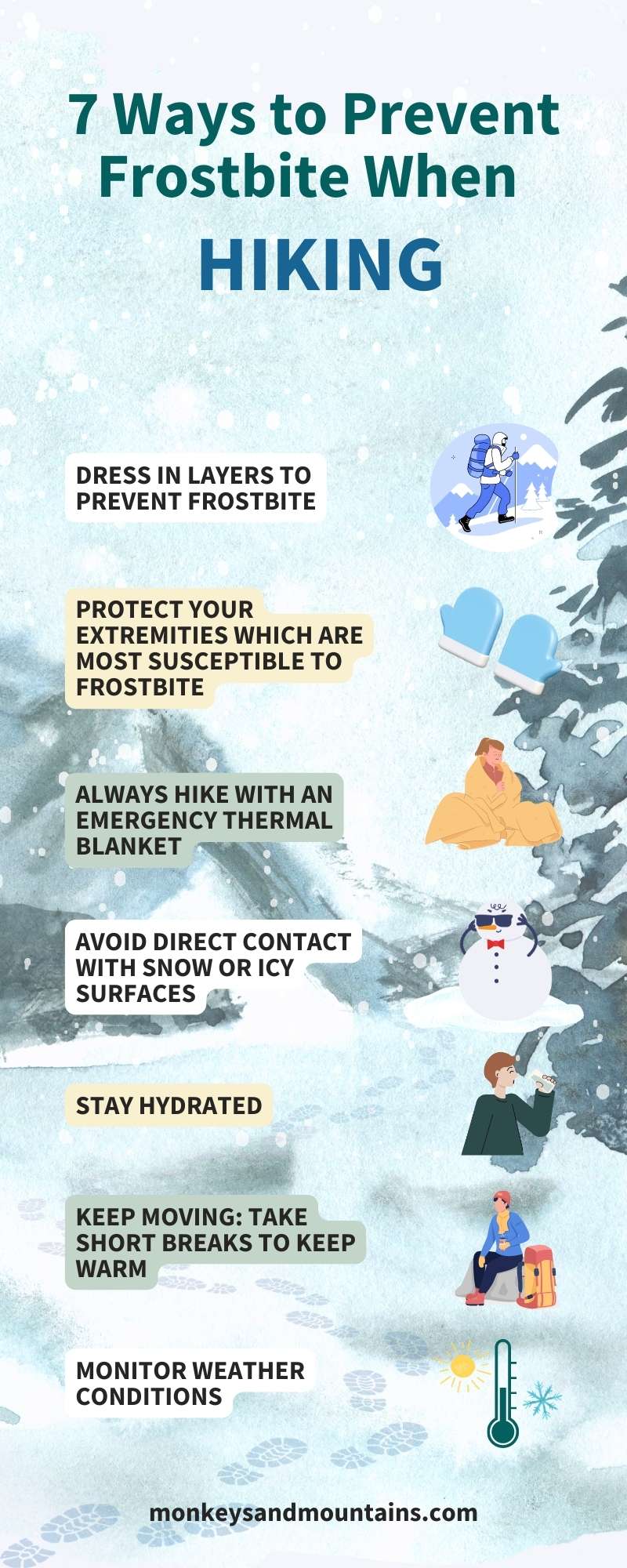
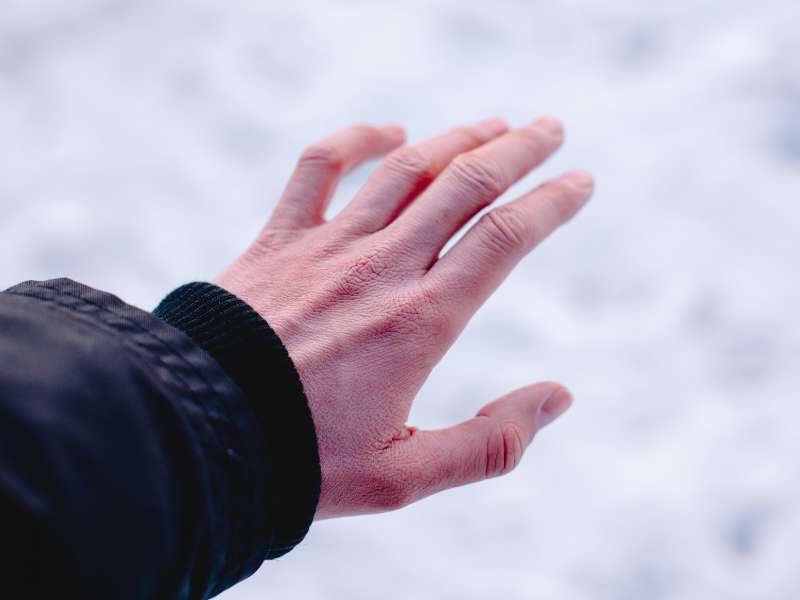
FAQs About Frostbite
What is frostbite?
Frostbite is an injury caused by the freezing of the skin and underlying tissues.
What are the symptoms of frostbite?
According to the Mayo Clinic, the signs of frostbite are:
• cold skin and a prickling feeling,
• followed by numbness and inflamed or discolored skin. I’ve noticed that
• my skin will turn white
• As frostbite worsens, skin may become hard or waxy-looking
• loss of coordination (but please don’t wait until you experience that while hiking)
What are the stages of frostbite?
There are three stages of frostbite.
Frostnip. This is mild frostbite. It doesn’t cause permanent damage. However, when the skin starts to warm you usually feel pain and tingling. It’s not pleasant but usually doesn’t require medical treatment.
Superficial frostbite. This is the next stage of frostbite and causes changes in skin color. Your skin may also begin to feel warm. The Mayo Clinic says you may need medical attention, especially if you notice stinging, burning or selling or a fluid-filled blister that may appear 12 to 36 hours later.
Deep frostbite. The next stage of frostbite is very serious as it causes not only damage to skin but also the tissues below as well. Your skin may turn white or blue-gray. You may also lose all sensations of being cold. Large blisters may appear 24 to 48 hours afterwards. Severe frostbite always requires medical care.
What do you do if you notice you have frostbite and you’re still hiking?
The first thing you’ll want to do is turn back. Ideally, you would have turned back earlier, but don’t delay. Turn back now and keep moving even if you’re tired. You don’t have to hike fast, but it’s important to move. I also find it useful to move the affected body part if possible. I.e. flexing my hands and doing wrist circles if my fingers are affected.
Then you should remove all wet clothing, i.e. gloves, socks, etc.
You’ll also want to protect the affected area from the cold. I.e. if you have frostbite on your fingers, you can hike with your hands in your pockets with warm dry gloves for further protection.
If you’re in a lot of pain, you can take a pain reliever, but this won’t actually make it better, just less painful.
Once you’re back in the car, get out of your wet clothes, put on warm clothing and wrap up in a warm blanket.
Now that you know how to prevent frostbite while hiking in cold weather, check out our Winter Hiking: 21 Tips to Keep You Warm and Safe article.
